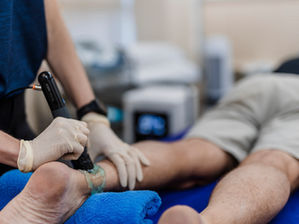What the Federal Budget Means for Your Small Business
- Oct 30, 2020
- 3 min read
Updated: Dec 1, 2020

This year’s Federal Budget is certainly not the norm; it's all about spending to continue to stimulate the economy...
BOOSTING APPRENTICE WAGE SUBSIDY This subsidy is for any new apprentice or trainee you hire after the 5 October 2020. They can be first-year or mid-way through an apprenticeship. The subsidy is 50% of the gross wages paid from 5 October 2020 to 30 September 2021, up to a maximum of $7,000 per quarter.
For your existing apprentices that are no longer receiving Jobkeeper, the 50% wages subsidy will continue until 31 March 2021.
JOBMAKER Designed to move young Australians from Jobseeker into the workforce. The credit will be $200 per week for employees aged 16 to 29 and $100 per week for employees aged 30 to 35. To qualify, your business can’t be on Jobkeeper, and the position must be an ‘additional’ position, i.e. your headcount at 30 September needs to increase along with your payroll amount. The employee will need to work a minimum of 20 hours per week each quarter and must have received Jobseeker, Youth Allowance or Parenting Payment during at least one of the three months before their employment.
If your business and the employee qualify, then this will be available for each new job created from 7 October 2020 to 6 October 2021. You also need to have an ABN, be up to date with tax lodgements, be registered for PAYG withholding and report via Single-Touch payroll.
FULL EXPENSING OF ASSETS Assets purchased from 7.30pm on 6 October to 30 June 2022 will be able to be claimed as a tax deduction in full in the year they are ‘installed’ rather than depreciated over a number of years.
For any assets already purchased between 1 July 2020 and 6 October, if the cost is less than $150,000 and the asset is installed ready for use before 30 June 2021 you will still be able to claim in full.
Small businesses with a turnover less than $10 million can also deduct the balance of any simplified depreciation pools at the end of the year while the full expensing rules apply. Remember this is a tax deduction and not a handout from the government. You still need to be able to fund this purchase.
RESEARCH & DEVELOPMENT Instead of the proposed cuts to the R&D tax incentive, we are now looking at an additional $2 billion being added to the program.
For those with a turnover of less than $20 million, the R&D tax offset is 18.5% on top of the Company Tax Rate. This will start from 1 July 2021. There will be no cap on the refund amount either which is great news.
LOSS CARRY-BACK FOR COMPANIES If you usually make a loss in your business, this ‘loss’ gets carried forward to future years for you to offset against future profits. These new rules allow you to ‘carry-back’ these losses effectively giving you a refund of prior tax paid. Losses that you incur in FY20, FY21 or FY22 will be able to carry-back against profits made in or after the FY19.
For example – let’s assume in FY19 you made a profit of $500,000 for the year, and therefore paid $137,500 in tax. Due to COVID, you made a loss of $100,000 in FY20, and you purchased some additional equipment and made a loss of $300,000 in FY21. The loss that would qualify for the carry-back is $400,000, i.e. FY20 + FY21. In this example, you would receive $110,000 as a refund when you lodge your FY21 Tax Return.
Remember, it’s always a good idea to get some professional advice, and Growthwise is here to help. For contact details visit www.growthwise.com.au
Alan is the co-founder of Growthwise, an accounting firm in Newcastle. Alan is an SMSF Specialist who helps people prepare for a worry-free retirement.


























































